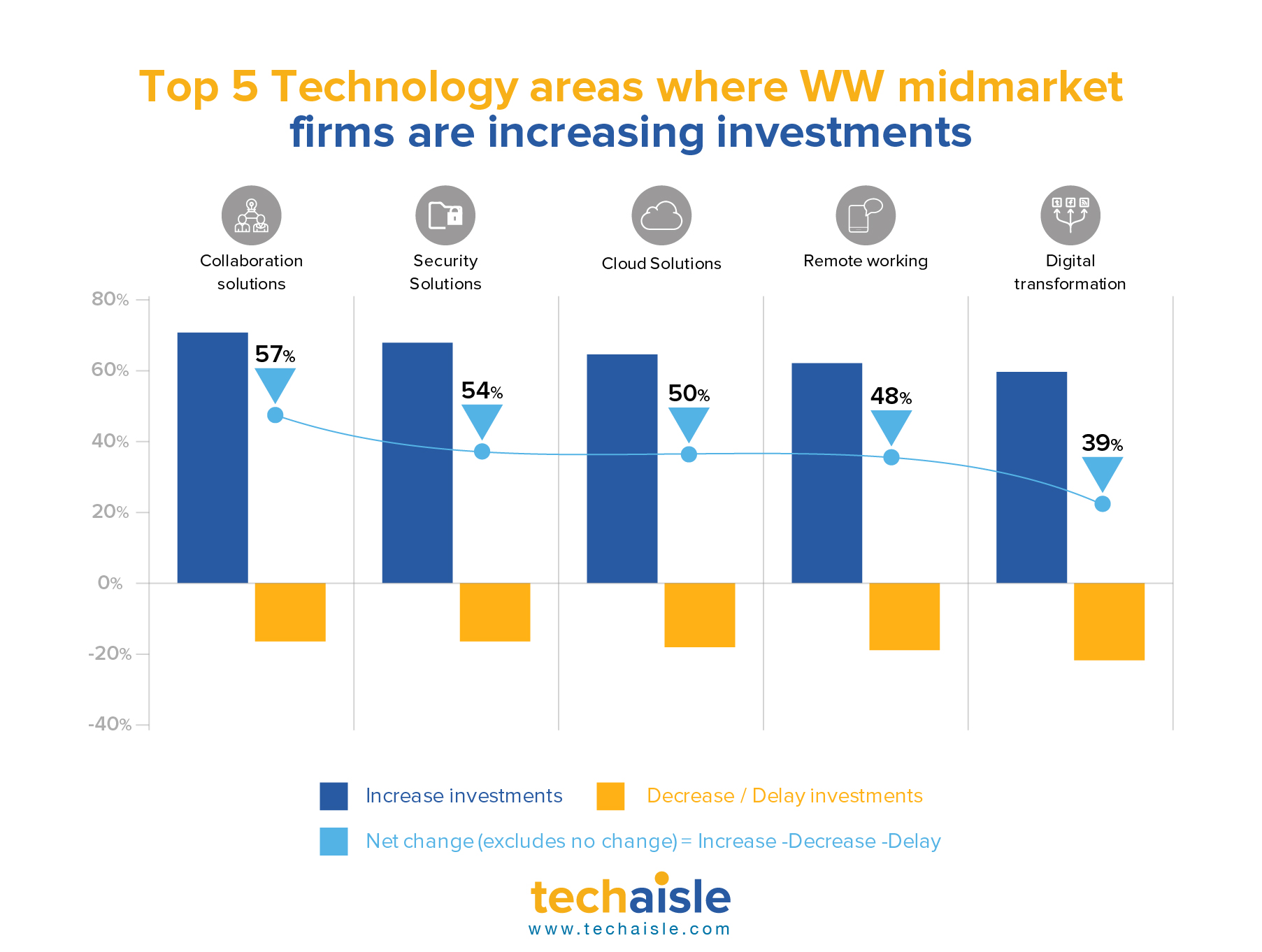Communication, collaboration, and human connections are a central component to virtually all business activities. In today’s business environment, we interact at all points in the business cycle: in cross-functional planning and management, within a single co-created document or spreadsheet, in the stages and connection points defined by our business processes. From a supplier’s perspective, these are both encouraging and daunting times. SMB and midmarket customers are eager to acquire collaboration capabilities. Still, at the same time, they are far more demanding in terms of the scope of those capabilities, and their expectation, that any tool can seamlessly connect to any other.
Collaboration and video-conferencing are increasingly crucial to SMB business success. They are among the top five technology priorities to satisfy their desire to make employees more productive in a hybrid work environment. Techaisle’s latest global survey of N=2450 SMBs shows that 73% are increasing investments in collaboration solutions. As SMBs tighten budgets, conferencing solutions take center stage. While these solutions have been around for a long time, Techaisle believes that broad adoption among SMBs is upon us, as evidenced by the priority assigned to such technologies versus the pre-pandemic penetration level. There are many solutions that SMBs can take advantage of, and no technology other than video conferencing has consistently shown the promise of high adoption rates in recent times.
Poly, with its audio and video intelligent software, is well-positioned to drive platform-independent, cloud-managed, unified communication and collaboration adoption within the SMB segment.
Why Poly for SMBs and Midmarket firms
Poly is a company that empowers human connections for remote work and the impending return to the office. Formed in 2019 with Polycom’s acquisition by Plantronics, Poly is on a mission to deliver a comprehensive set of endpoints for the unified communications and collaboration market through differentiating software. Two strong players, both leaders in their respective audio and video technology areas – came together to pave the way in the era of digital transformation, taking human communication, be it collaboration at home or office, to the next level. It is, indeed, succeeding.
Polycom devices, such as Trio or Soundstation family, have been the default choice for audio conferencing. Most SMBs that Techaisle has surveyed refer to Poly as Polycom. Trio with Poly logo is not on office/home desks yet, but it will be. After all, it has only been a year and a half since the new logo and company name announcement. Within the last 12-18 months, the design language has evolved at Poly, resulting in a refresh of its entire product and services portfolio.
While it is true that the average SMB user may not know the Poly brand, it has over 400K customers worldwide. It is relatively widely known as the conferencing leader in the midmarket and enterprise IT community. Many small businesses use consumer devices, conferencing hardware from PC/Smartphone OEMs, tools from meeting service providers, mainly due to aggressive marketing and pricing models. We feel there is nothing to prevent newly formed Poly from becoming a stronger player in this market.
Poly’s portfolio is so comprehensive that it addresses the needs of the enterprise, SMB, and home-office workers covering different workstyles – conference rooms, desk phones, large rooms, huddle rooms, video conferencing devices, and on-the-go headsets. 95% of Poly’s employees work remotely / from home and use Poly products.
















